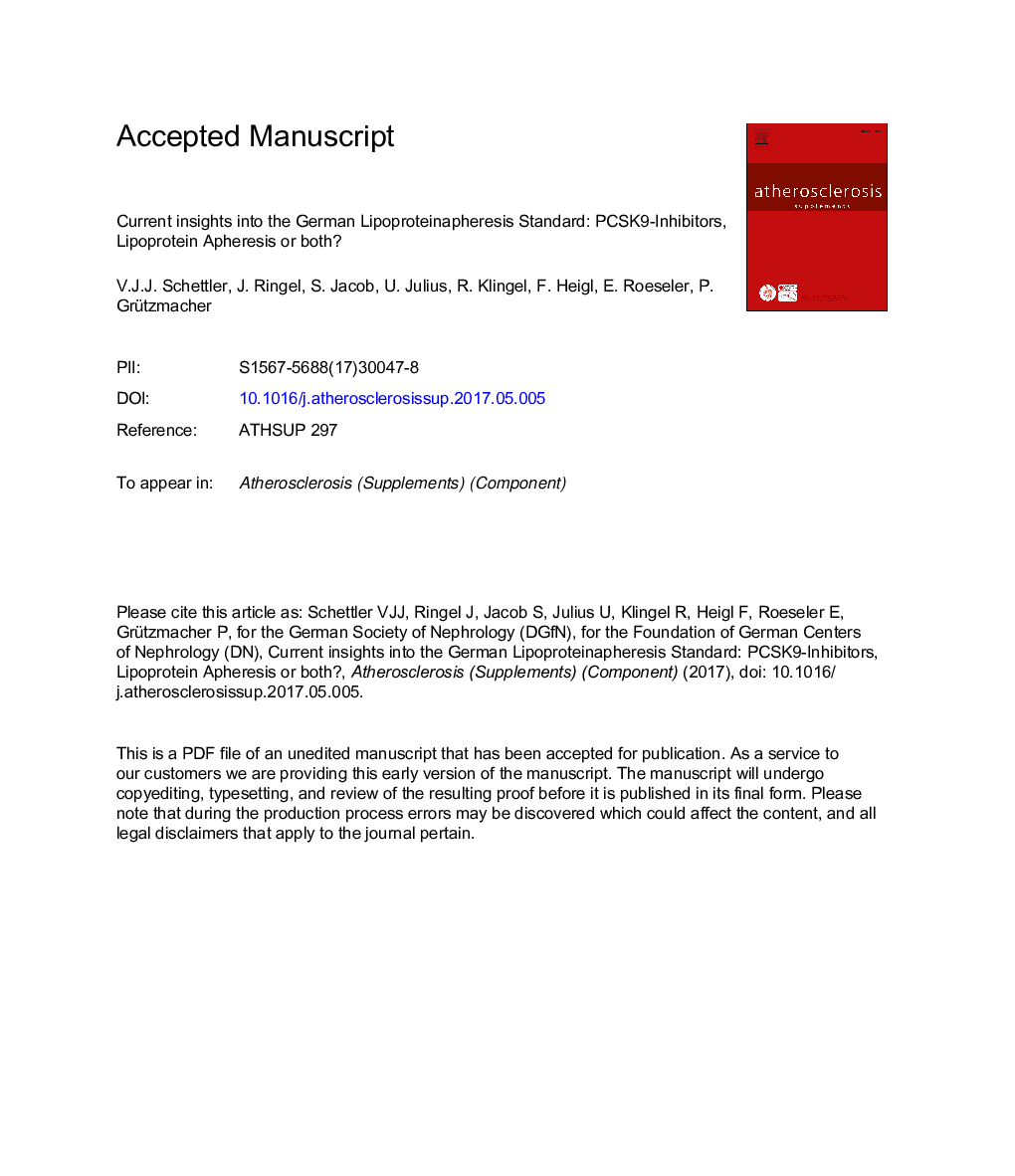| Article ID | Journal | Published Year | Pages | File Type |
|---|---|---|---|---|
| 8657252 | Atherosclerosis Supplements | 2017 | 14 Pages |
Abstract
According to current European guidelines, lipid lowering therapy for progressive cardiovascular disease including cardiovascular events has to be focused on a target level for LDL-C. In contrast for Lp(a) a threshold has to be defined with respect to the method of measurement. However, due to new lipid lowering drug developments like PCSK9-inhibitors (PCSK-9-I) a therapeutic algorithm for patients with severe hypercholesterolemia or isolated Lipoprotein(a)-hyperlipoproteinemia with progressive cardiovascular disease may be necessary to manage the use of PCSK9-I, lipoprotein apheresis (LA) or both. The therapeutic approach for patients with homozygous familial hypercholesterolemia is unambiguous: In addition to LA, in order to improve LDL-C reduction, PCSK9-I could be applied. In patients with heterozygous familial hypercholesterolemia, PCSK9-I is to be applied first. If in addition to a pronounced LDL-C elevation, cardiovascular complications exist or if imaging techniques documented atherosclerotic changes pre-disposing for a cardiovascular event while LDL-C reduction is insufficiently reduced (LDL-CÂ >Â 100Â mg/dl (2.6Â mmol/l)), LA treatment should then be applied as last resort. In patients with elevated Lp(a) concentrations (Lp(a)Â >Â 60Â mg/dl (>120Â nmol/l)) and established cardiovascular disease, therapy should rely primarily on LA methods. If in addition to high Lp(a) levels insufficiently treated LDL-C concentrations (LDL-CÂ >Â 100Â mg/dl (2.6Â mmol/l)) exist, in rare cases PCSK9-I can supplement the lipid lowering concept.
Related Topics
Health Sciences
Medicine and Dentistry
Cardiology and Cardiovascular Medicine
Authors
V.J.J. Schettler, J. Ringel, S. Jacob, U. Julius, R. Klingel, F. Heigl, E. Roeseler, P. Grützmacher,
